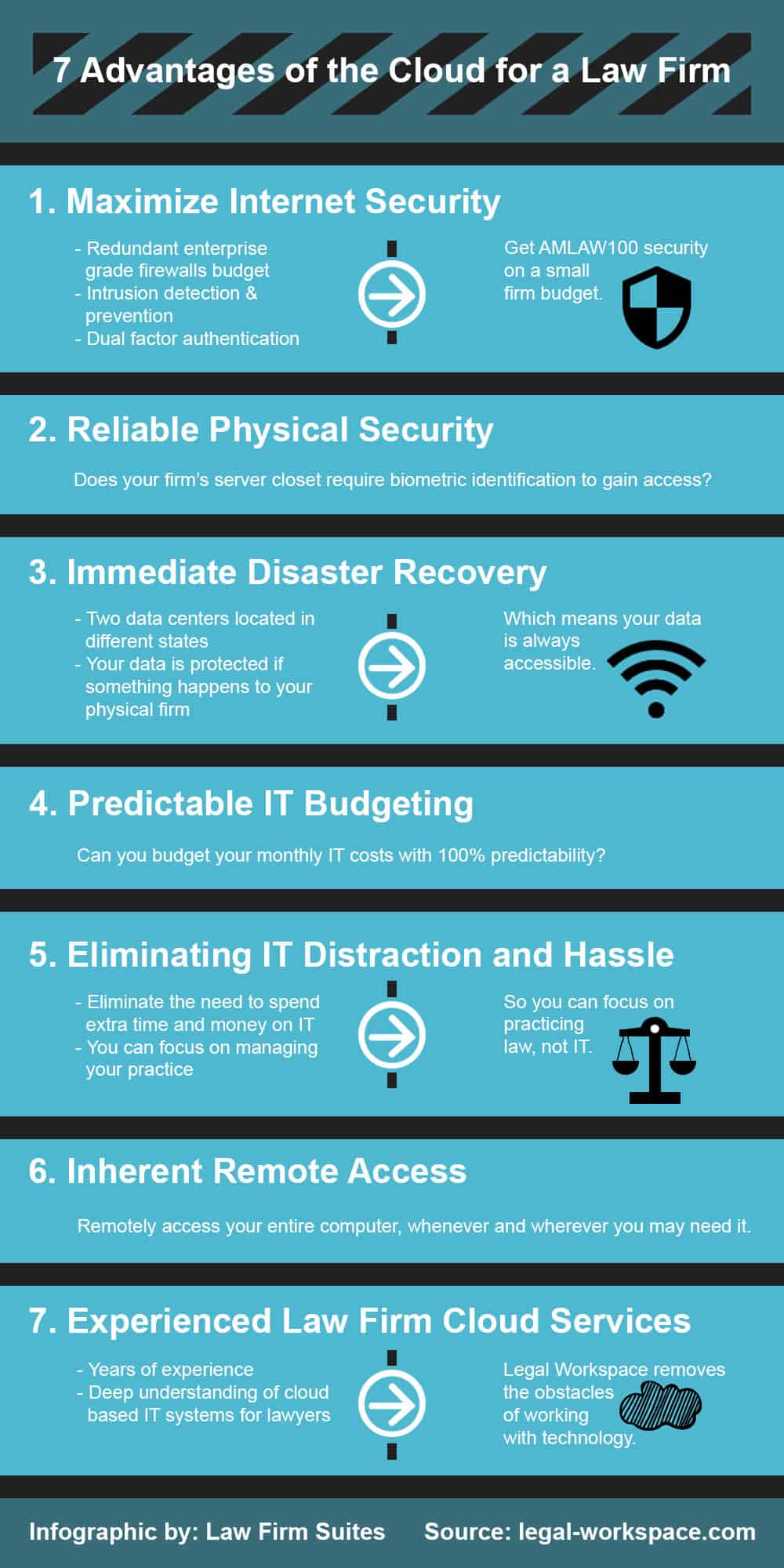Moving to use cloud data storage and software-as-a-service (SaaS) can give firms better security with more predictable IT costs
Seven advantages of the cloud for law firms

Source and for more: http://legal-workspace.com/7-advantages-cloud-law-firm
Cloud = innovation
Moving to the cloud is more about innovating and digital transformation
The real measure of value in both cloud infrastructure and cloud services . . . isn’t naturally expressed in hard dollars. Instead, the cloud is such a fundamentally different way of operating a business that the benefits are often misunderstood and, when reduced to dollars, understated.
Return on investment
The ROI of moving to the cloud has been calculated to be very good: One reputable study - by Andrew McAfee (principal research scientist at the Center for Digital Business at the MIT Sloan School of Management) - shows that a small business of 50 people could save 50% of their IT costs over five years. For smaller firms the savings are even larger (and for bigger ones they remain very good at 45%).
Use his model to test your own data:
https://docs.google.com/spreadsheets/d/11q0tL5buRjxk1Pbh9xBZBd9Grgxc27QDm8GyGgZTr_g/edit#gid=32
To read the blog post: http://policybythenumbers.blogspot.ca/2012/10/modeling-costs-of-cloud-vs-on-premise.html Or you can
Learn more
Get an overview of cloud computing and the key concepts that you should consider when making a move to the cloud. There are three types of cloud solutions: software as a service, infrastructure as a service, and platform as a service. Instructor David Linthicum helps you evaluate these solutions, including Amazon Web Services, Google Cloud Platform, Salesforce.com, and Office 365, as well as the data and applications that are best suited to the cloud. David explains how to select a cloud provider and plan a migration. He also reviews the security considerations and typical day-to-day operations and tools IT administrators need to keep their cloud-based infrastructure up and running. Learning objectives:
- Types of clouds: SaaS, IaaS, and PaaS
- Identifying the data and applications to move to the cloud
- Migration planning
- Selecting a cloud provider
- Cloud security
- Cloud operations
- Approaching management and monitoring
https://www.linkedin.com/learning/learning-cloud-computing-core-concepts-2/
Security
Of course security is a major concern. In a recent posting, the ABA said the following: "a legitimate argument can be made that files stored on the vendor's servers are more secure than those located on a typical attorney's PC, as the vendors often employ elaborate security measures and multiple redundant backups in their data centers." For more including the kinds of questions lawyers ought to be asking:
The Wisconsin State Bar has a useful "ethics opinion" that outlines the obligations for lawyers in the context of cloud computing. Their conclusion: "Lawyers can use cloud computing services if the lawyer uses reasonable efforts to adequately address the potential risks associated with it, the opinion concludes."
See the article with explanation of what "reasonable" might be: http://www.wisbar.org/NewsPublications/InsideTrack/Pages/Article.aspx?Volume=7&Issue=10&ArticleID=24094
And for a discussion that looks at large firms and their big (international) clients see: http://www.legaltechnology.com/latest-news/passing-clouds-the-cloud-club-client-consent-not-required/
.png?height=120&name=Lex_Mundi_Marque_White_RGB%20(003).png)